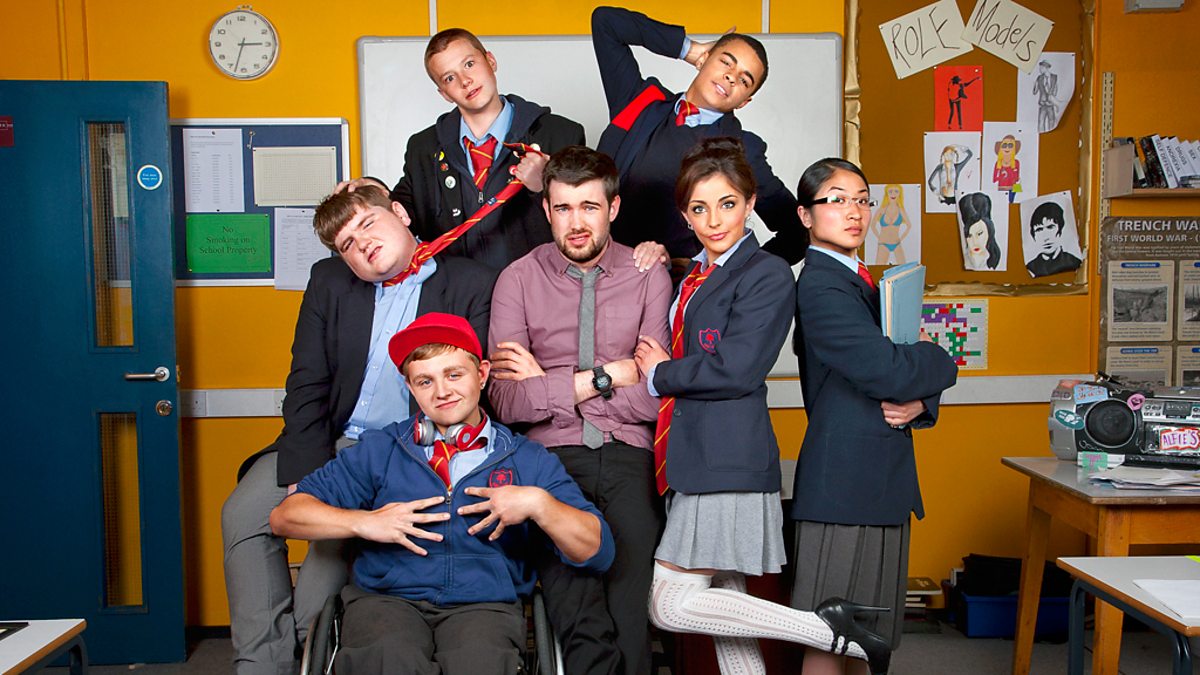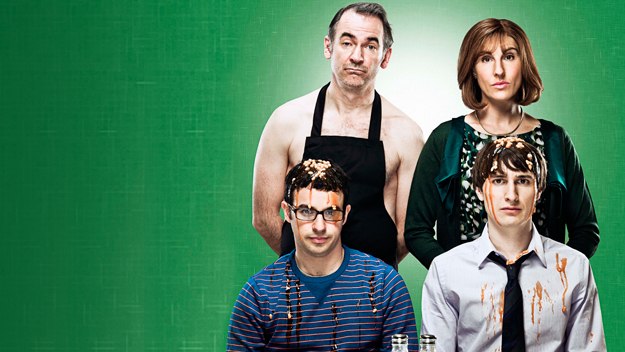4. (b) Discuss in detail how one programme (Bad Education)
offers audience pleasures. Give examples from the programme. [15 marks]
Bad Education
A narrative pleasure is the plot that is repetitive but has a
different middle, which is typically Alfie messing up somehow, and finishing
with him not losing his job. The excitement and build up to the catastrophe
that Alfie creates brings an audience. ‘Bad Education’ is set in the same place
usually, some times there is a trip but the scene stay the same of familiar
throughout, the school, and has the same characters so the audience develops a
relationship with them and watches them develop. In the episode we watched Alfie began his bad
day by having built up bad things throughout, which is the structure of his
sitcom, he starts the day with a hangover and then is told he needs to mark his
students mock exams or else they will fail. So all of a sudden he has the job
of marking a lot of exams before that parents evening that night. Alfie
struggles with it so he decides to let the students mark them which shows he is
unprofessional. The deputy head who the audience are supposed to hate then
reveals that she knows he got them to mark the tests so then all the students
fail. This is another consequence of his bad choices which adds to his rising
of bad choices in the lead up to the
main event. Throughout Alfie tries to flirt with another teacher who has been
fundraising for a disease, Alfie pretends to know it then says a child in one
of his classes, who is now presumed a push over, mother has the disease and
over exaggerates her symptoms e.g. her fingers fell off.
The main character is Alfie wickers who is the teacher of a
class of teens presumed to be 16. The class meets the usual stereotypes of a
sitcom:
1.The Logical Smart
One – responsible, stable: This is predominantly the Asian girl, Jing , which meets the
stereotype of comedy and the media in
general.
2.The Lovable Loser – sarcastic, optimistic, needy, impulsive:
Both Alfie and Joe show this trait as they have bad things happen to one
another, Joe’s is usually because of Alfie
3.The Neurotic – awkward, nervous, controlling, worried: Joe,
fits mostly at of them all
4.The Dumb One – friendly, naïve, gullible, no ulterior motive:
Joe also fits this character as he is brought into trouble by Alfie
5.The Bitch/Bastard – mean, insensitive, insecure, doesn’t
apologize: Mitchell and Remdog are the unliked ones of the sitcom as they bully
people by taking the mick out of them
6.The Womanizer/Manizer (AKA “Slutty Spice”) – charming,
seductive, horny, superficial: Chantelle fits this character as she tries to
flirt with Alfie throughout telling him things like he’ll need a rebound after
being embarrassed in front of Mrs Gulliver
7.The Materialistic One – judgmental, entitled, spoiled:
Stephan is this character and also fits the stereotypical gay character
8.In Their Own Universe (AKA “Spacy Spice”) – odd, eccentric,
uses illogical logic: The head teacher Fraser fits this character as he acts
very childish and is an unconventional head teacher. In the episode we watched
Fraser and Alfie were competing for Mrs Gulliver’s attention.
The fact that the teacher, Alfie, and head teacher, Fraser,
are called and known by their first name shows that they are immature where as
Mrs Gulliver is more professional and due to her calm and passionate nature
throughout it reflects why she isn’t called by her first name. Mrs Gulliver is
taken seriously.
Stereotypes are important in comedy as it can make the
audience feel superior for example the ‘chav’ Mitchell is dumb and Alfie often
take the mick out of his family’s situation. As Alfie is more snobby not only
does it make him feel superior is does too for the audience. The smart one is usually
of Asian ethnicity and outwits the other cast members, Jing will do this by
saying something in Chinese under her breath but then Alfie will counter act it
with a completely different topic not knowing what has been said. Chantelle also
meets the ‘slut’ stereotype and often makes euphemism and ‘offers herself’ to Alfie
she wears tight clothes and short skirts. In the episode we watched it carried
on her stereotype as we meet her mother who is also very forward. This offers
the audience gratification because of humorous it is to see certain characters
being ridiculed. Plus, in some sense it establishes a relationship characters like
Alfie and the audience due to the audience being able to relate with the
characters with them agreeing with.

